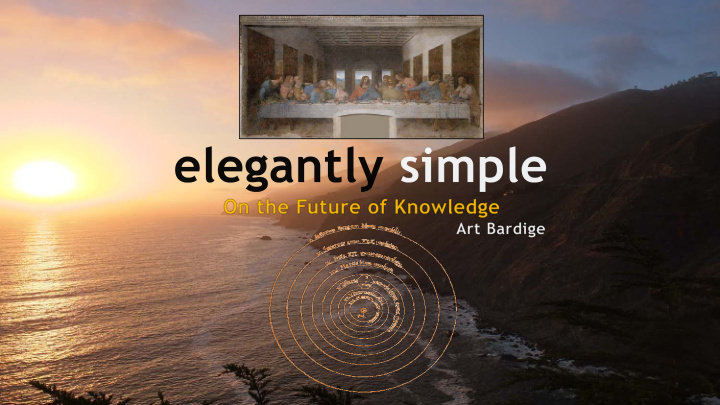



The Pattern of Knowledge Periods Sites 12 Phases Fasteners Connections Parts Relations Symbols Transformations Singular Based on that Connections Universals Relations Wholes singular idea Transformations Connections Objects Relations Parts Transformations Environments Plural Connections Relations Wholes Transformations
The Pattern of Knowledge Periods Semi-Periods 12 Phases Fasteners Connections Parts Relations Symbols I could divide each in Transformations Singular two distinct halves Connections Universals Relations Wholes Singular • Transformations Plural • Connections Objects Relations Parts Transformations Environments Plural Connections Relations Wholes Transformations
The Pattern of Knowledge Periods 12 Phases Connections Parts Relations Symbols And each half again in Transformations Singular Connections half into Universals Wholes Relations Parts • Transformations Wholes) Connections • Objects Parts Relations Transformations Environments Plural Connections Wholes Relations Transformations
The Pattern of Knowledge Entities Sites 12 Phases Fasteners Connections Parts Relations And each of those into Symbols Transformations Singular three parts Connections Universals Connections Wholes Relations • Transformations Relations • Connections Objects Transformations • Parts Relations Transformations Environments Plural Connections Wholes Relations Transformations
12 “phases” in Symbols
Universals
Objects
Environments
Symbols went through these phases many times.
Universals phases repeated in Medieval Europe
I call this the “Pattern of Knowledge”
While I focused on “Western knowledge,” I believe this pattern of the evolution of knowledge is independent of culture.
The Pattern lets us explore interesting connections between art and science.
Plural Environments Parts Relations Picasso, Les Demoiselles d’Avignon Einstein, “On the Electrodynamics of Moving Bodies 1905 1907
Plural Universals Parts Connections Parthenon Democritus, Atomic Theory c. 430 437
Plural Objects Wholes Relations Faraday, Lines of Force Delacroix, The Fanatics of Tangier c. 1840 1838
Plural Environments Wholes Relations Jackson Pollack, No. 5, 1948 Feynman, Feynman Diagrams 1948 1948
Singular Objects Wholes Relations Caravaggio, The Calling of St. Matthew Kepler, The New Astronomy 1609 1600
Finding fascinating connections
Parts Transformations Plato
Parts Transformations Plato Dante
Parts Transformations Plato Dante Kant
Parts Transformations Plato Dante Kant Einstein
You may be wondering …
Since we seem to have ended the environments periods…
2. What’s next?
I thought of… I pictured… Symbols as the simplest building block Universals Objects Environments ?
Symbols as the simplest Universals as collections of symbols Objects Environments ?
Symbols as the simplest Universals as collections of symbols Objects as collections of universals Environments ?
Symbols as the simplest Universals as collections of symbols Objects as collections of universals Environments as collections of objects ?
What is a collection of environments? I pictured…
I pictured… I turned back to the 19 th century
I pictured… And wondered how …
Newton’s Universal Law of Gravitation
Newton’s Universal Law of Gravitation Maxwell’s Electrodynamics
Newton’s Universal Law of Gravitation Maxwell’s Electrodynamics Could coexist?
Recommend
More recommend